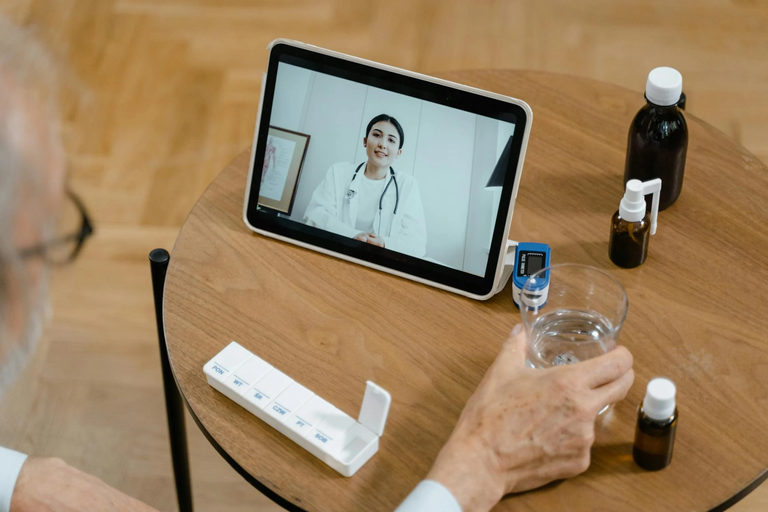The Transformative Power of Telemedicine: Improving Healthcare Access for Underserved Communities

In today's fast-paced world, technology continues to shape the way we live, work, and even seek healthcare. One of the most significant advancements in the field of medicine is telemedicine, a revolutionary approach that is changing the landscape of healthcare delivery. Telemedicine, also known as telehealth, uses digital communication tools to connect patients with healthcare providers remotely. This innovation is not only making healthcare more convenient for everyone but is also ensuring that underserved populations have greater access to quality medical care.
Breaking Barriers to Healthcare Access
For many individuals living in underserved communities, accessing healthcare can be a significant challenge. Factors such as geographical barriers, limited transportation options, financial constraints, and shortages of healthcare providers can pose obstacles to receiving timely and adequate medical attention. Telemedicine has emerged as a solution to address these barriers by leveraging technology to bridge the gap between patients and healthcare services.
One of the key benefits of telemedicine is its ability to bring healthcare directly to the patient's doorstep. Through virtual consultations, patients can connect with medical professionals from the comfort of their homes, eliminating the need for lengthy travel or waiting times. This is particularly beneficial for individuals residing in remote rural areas where access to medical facilities is limited.
Empowering Underserved Communities
Underserved populations, including low-income individuals, minorities, and those living in underserved rural or urban areas, stand to benefit greatly from the advancements in telemedicine. By providing a means to access healthcare services remotely, telemedicine ensures that no one is left behind when it comes to receiving essential medical care.
For instance, consider a low-income family living in a rural community with limited access to healthcare facilities. Through telemedicine, they can schedule virtual appointments with healthcare providers, receive medical advice, and even obtain necessary prescriptions without the burden of travel costs or time constraints. This newfound accessibility to healthcare can significantly improve health outcomes and overall well-being for underserved individuals and communities.
Moreover, telemedicine has the potential to reduce healthcare disparities by offering equitable access to medical services. By breaking down geographical and financial barriers, telemedicine ensures that individuals from all walks of life can receive the care they need, regardless of their location or socioeconomic status. This inclusivity is crucial in promoting health equity and addressing systemic inequalities in healthcare delivery.
Enhancing Healthcare Delivery and Outcomes

In addition to improving access to care, telemedicine is also enhancing healthcare delivery and outcomes for underserved populations. Remote monitoring technologies allow healthcare providers to track patients' vital signs, manage chronic conditions, and provide timely interventions without the need for frequent in-person visits. This proactive approach not only empowers patients to take control of their health but also ensures early detection and management of potential health issues.
Furthermore, telemedicine plays a vital role in expanding mental health services to underserved communities. Individuals struggling with mental health issues, such as anxiety, depression, or trauma, can benefit from virtual therapy sessions and counseling, overcoming barriers to seeking mental healthcare. This increased accessibility to mental health services is essential in addressing the growing mental health crisis and ensuring that individuals receive the support they need to thrive.
The Future of Telemedicine and Healthcare Equity
As telemedicine continues to evolve and integrate with traditional healthcare systems, its impact on underserved communities is expected to grow exponentially. Innovations in telehealth technologies, such as artificial intelligence, remote monitoring devices, and digital health platforms, hold the potential to revolutionize healthcare delivery and improve outcomes for all patients, particularly those in underserved populations.
It is essential for policymakers, healthcare providers, and stakeholders to prioritize the expansion of telemedicine services to reach underserved communities effectively. By investing in infrastructure, technology, and training programs, we can ensure that telemedicine becomes a sustainable and accessible solution for improving healthcare access and equity for all individuals, regardless of their backgrounds or circumstances.
In conclusion, telemedicine is a powerful tool that is transforming healthcare access for underserved communities. By leveraging technology to overcome geographical, financial, and systemic barriers, telemedicine is creating a more inclusive and equitable healthcare system that prioritizes the well-being of all individuals. As we embrace the potential of telemedicine to revolutionize healthcare delivery, we must continue to advocate for policies and initiatives that ensure its widespread adoption and integration into our healthcare ecosystem. Together, we can build a healthier, more resilient future for everyone, one virtual appointment at a time.


Dear @jsalvage !
James!
Your argument is good!
By the way, Because I am visually impaired, it is difficult for me to receive telemedicine on my smartphone.
I live in a city with a population of 300,000, so there are a lot of Internet and smartphone users.
However, telemedicine still has not been achieved.
A lot of capital, technology, manpower, and time are still needed for telemedicine to be completed socially and institutionally!
You're right. As the world keep advancing,time will come when this will be reachable and welcome properly
Thanks for your contribution to the STEMsocial community. Feel free to join us on discord to get to know the rest of us!
Please consider delegating to the @stemsocial account (85% of the curation rewards are returned).
You may also include @stemsocial as a beneficiary of the rewards of this post to get a stronger support.